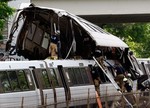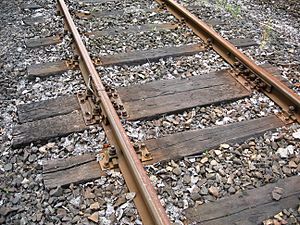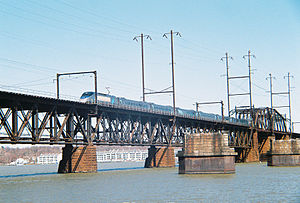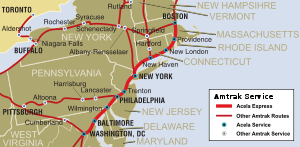
- Image by Getty Images via Daylife
Officials for the DC Metro have confirmed nine people were killed and seventy-five wounded in yesterday’s crash.
The accident was caused by one train on the Red Line rear-ending a stopped train at about 5PM on Monday between the Takoma and Fort Totten ststions. The operator of the train was confirmed as one of those killed. The NTSB had raised concerns about the crash-readiness of the 1000 series, of which this train was one, and had recommended they be phased out or fitted with additional safety devices. The general manager of the Metro system, John B. Catoe Jr., said  that the crash occurred when one train headed into the center of the city stopped near a platform and was waiting for permission to proceed. The second train came from behind and hit it.
The newer cars, such as the one that was struck, contain nine data recorders, which will be recovered and analyzed. The Metro system has not had a fatality since 1982, when a train derailed between the Federal Triangle and Smithsonian stations.
It is as yet a mystery how even a car in need of increased improvements could have done this. Signals on most transit systems are designed to prevent a train from entering an occupied stretch of track. For more information, we turned to the Washington Post’s interview with Peter Goelz, former managing director of the NTSB, and other sources.
In June 2005, the signal system briefly failed in the tunnel between Foggy Bottom and Roslyn. The operator noticed he was getting too close to the train ahead, despite the fact the system told him the track was clear. He hit the emergency brakes, overriding the automatic control. Assuming this happened again, why did the operator not take action? That is part of the reason she was there, not merely to open and close the doors, which is the only part of the train the operator normally controls. Some safety experts said operators can “zone out” during computerized operation because they don’t have to pay as close attention as when they manually run trains.
The brakes could have also failed, which would be a serious maintenance issue. Outside of the train, the metro tore out all 20,000 trackside relays in 1999 after discovering that a small portion designed to last 70 years were failing after 25. They sent incorrect and dangerous instructions to trains on several occasions. One train was told to travel 45 mph on a stretch of track with a 15-mph speed limit; another was directed to travel at zero mph when it should have been ordered to move at 15 mph.
More on this as it develops.
Related articles by Zemanta
- Train Crash in Washington Leaves 6 People Dead (nytimes.com)
- At Least 9 Killed in D.C. Train Collision (abcnews.go.com)
- 6 dead after D.C-area train crash (msnbc.msn.com)
- Six die after two D.C. Metro trains collide (cnn.com)
- Two Trains Collide On Metro’s Red Line In Washington, D.C. (huffingtonpost.com)
![Reblog this post [with Zemanta]](http://img.zemanta.com/reblog_e.png?x-id=49a1013e-7afe-480d-84d0-4e4a32637aee)




2 comments for “Metro Crash in DC”